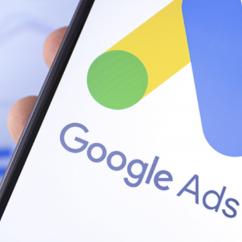Jewelry ECOMM Tech
Understanding Google Ads Match Types: A Comprehensive Guide | July 21, 2024 (0 comments)

If you're running a Google Ads campaign, understanding match types is essential. Match types determine how closely a user's search query must match your keyword for your ad to appear. This guide will help you understand the different Google Ads match types and how to use them effectively.
What Are Google Ads Match Types?
Google Ads match types are settings that control which searches trigger your ads. They help you manage who sees your ads based on the search terms they use. The four main match types are:
- Broad Match
- Broad Match Modifier
- Phrase Match
- Exact Match
Each match type offers different levels of control over when your ads appear. Let's break down each type to understand their functions and benefits.
Broad Match
Broad match is the default setting for Google Ads keywords. When you use broad match, your ads can appear for searches that include misspellings, synonyms, related searches, and other relevant variations.
How Broad Match Works
If your keyword is "running shoes," your ad might show up for searches like "buy athletic shoes," "running footwear," or "shoes for jogging." This match type reaches the widest audience but can also attract irrelevant clicks.
When to Use Broad Match
Brand Awareness: If you're looking to get your brand in front of as many eyes as possible, broad match is useful.
New Campaigns: When you're starting a new campaign and want to gather data on which search terms are effective.
Broad Match Modifier
Broad Match Modifier (BMM) allows for more control than broad match while still offering flexibility. By adding a "+" symbol before a keyword, you ensure that the modified term must be included in the user's search query.
How Broad Match Modifier Works
For example, if your keyword is "+running +shoes," your ad might show up for searches like "best running shoes" or "running shoes for men," but not for "athletic footwear." This ensures the search terms are more relevant to your ad.
When to Use Broad Match Modifier
Targeted Reach: When you want to reach a broad audience but need to ensure certain terms are included.
Refining Campaigns: Use BMM to refine your broad match campaigns for more relevant clicks.
Phrase Match
Phrase match offers more control than broad match and BMM. Your ad will only appear if the user's search query includes your exact keyword phrase, with words before or after it.
How Phrase Match Works
If your keyword is "running shoes," your ad might show up for searches like "best running shoes" or "affordable running shoes," but not for "shoes for running" or "running footwear."
When to Use Phrase Match
Targeted Traffic: When you want to attract more targeted traffic to your site.
Mid-Campaign Adjustments: Use phrase match to fine-tune your campaign based on data from broad and BMM matches.
Exact Match
Exact match offers the highest level of control. Your ad will only appear if the user's search query matches your keyword exactly or is a close variant.
How Exact Match Works
For example, if your keyword is running shoes, your ad will show up for searches like "running shoes" or "shoes running" but not for "best running shoes" or "buy running shoes."
When to Use Exact Match
Precision: When you want to ensure your ad only appears for specific search terms.
High-Converting Keywords: Use exact match for keywords that have proven to convert well in your campaigns.
Choosing the Right Match Type
Choosing the right match type depends on your campaign goals. Here are some tips to help you decide:
- Start with Broad Match: Use broad match to gather data and understand which search terms are effective.
- Refine with BMM and Phrase Match: Once you have some data, use BMM and phrase match to refine your targeting and reduce irrelevant clicks.
- Optimize with Exact Match: For high-converting keywords, switch to exact match to ensure precision and maximize ROI.
Monitoring and Adjusting Match Types
It's essential to monitor the performance of your keywords and adjust match types as needed. Use Google Ads' search terms report to see which queries trigger your ads and how they perform. This information will help you make informed decisions about which match types to use.
Regularly Review Search Terms
Regularly review the search terms report to identify new opportunities and eliminate irrelevant queries. Add negative keywords to prevent your ads from showing for unrelated searches.
A/B Testing
Experiment with different match types to see which ones perform best for your campaign. A/B testing can help you determine the most effective match types for your keywords.
Bid Adjustments
Adjust your bids based on the performance of your keywords. For example, you might increase bids for exact match keywords that convert well and decrease bids for broad match keywords with low conversion rates.
Conclusion
Understanding Google Ads match types is crucial for running a successful campaign. By using the right match types, you can control when your ads appear, attract relevant traffic, and maximize your ROI. Start with broad match to gather data, refine your targeting with BMM and phrase match, and optimize with exact match for high-converting keywords. Regularly monitor and adjust your match types to ensure your campaign remains effective and cost-efficient.
By following this comprehensive guide, you'll be well-equipped to make the most of Google Ads match types and achieve your advertising goals.
About The Author:
Mike Hauben is the Creative Director and Marketing Director for the Centurion Jewelry Show. He has over fifteen years experience and holds a number of digital certifications (Google, Yoast, Hubspot, and more). Mike has gained recognition among the jewelry industry in recent years as a popular keynote speaker, author, and trusted expert. He’s spoke at conferences like Centurion and JCK at the Javits Center.
He’s received an Award Of Excellence from MMA Business Magazine and is a black belt in Brazilian Jiu Jitsu. He lives with his family in Atlantic Beach, NY.
Learn more: haubenmedia.com


